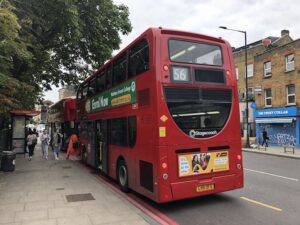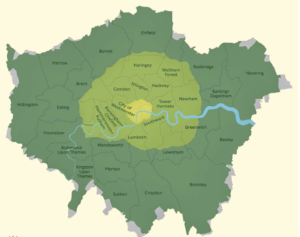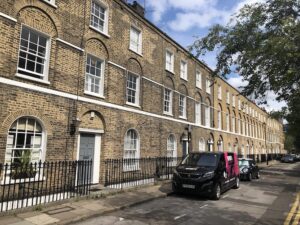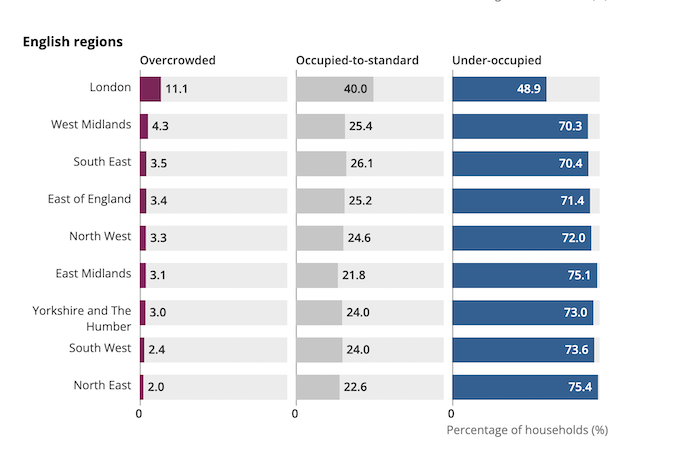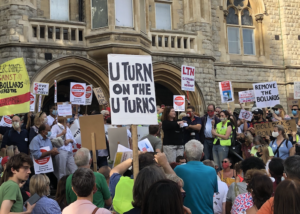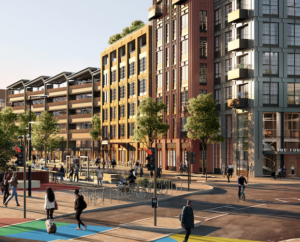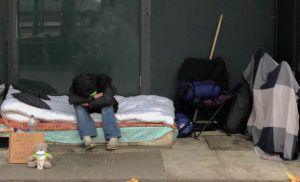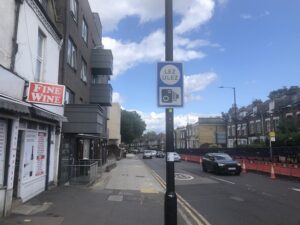London’s original central London Ultra-Low Emission Zone (ULEZ) was devised by Boris Johnson during his time as London Mayor and implemented by his successor Sadiq Khan on 8 April 2019, over a year earlier than Johnson had envisaged.
Prior to that, from 23 October 2017, Khan had imposed a £10 per day Toxicity Charge on pre-Euro 4 vehicles – typically those registered before 2006 – on top of the central London Congestion Charge during its operating hours of 7am-6pm.
The ULEZ operates round the clock and its daily charge for non-compliant vehicles is £12.50. ULEZ standards are Euro 4 for petrol vehicles, Euro 6 (introduced September 2015) for diesel, and Euro 3 for motorcycles and mopeds.
These have been set in order to reduce the amount of emissions released into the air by vehicle engines in the form of the Nitrogen Oxide (NOx) gases Nitric Oxide (NO) and in particular Nitrogen Dioxide (NO2), which has harmful effects on lungs, and of microscopic particles known as Particulate Matter (PM), which also damage the respiratory system.
Khan greatly expanded the ULEZ on 25 October 2021 following his re-election in May of that year, taking it out to the North and South Circular roads – an 18-fold increase in size. On 25 November 2022 he announced that the zone would go Londonwide from tomorrow, 29 August 2023, so that it covers all of Greater London’s 606 square miles.
The political and media furore leading up to the latest expansion has been loud and ubiquitous. How should we assess the actual impact of its implementation in the months to come? Here are five things to keep an eye on.
The impacts on air pollution and health.
A report for City Hall published in February said that since 2019 the ULEZ had led to a reduction in NOx in the air within the zone of 26 per cent and one of 23 per cent across Greater London as whole compared with what the levels would have been without it.
The level of NO2 was said to be down by 46 per cent and 21 per cent in central and inner London respectively. Reductions at roadside locations were said to be still bigger.
The same report said fine particulate matter (PM2.5) in the air had reduced by 19 per cent within the ULEZ and by seven per cent across Greater London altogether since 2019.
Emissions of Carbon Dioxide (CO2), the “greenhouse gas” most responsible for global warming and climate change, were also said to have fallen, by four per cent with the ULEZ and by three per cent more widely.
However, previous research said the benefits of the first expansion had been only marginal during its first few weeks. This was disputed, and arguments about how effective the new enlargement has been can be expected to continue until at least mayoral election day next May.
Mayor Khan said in October 2021 he was confident that the first expansion of the ULEZ would result in “almost 300,000 new case of air quality-related disease” and “one million hospital admissions” being avoided, with particular benefits on streets and in areas where poorer Londoners live. Watch out for claims and counter claims about the latest expansion’s health impacts too.
Londoners’ opinions about the full expansion.
Opponents of the latest expansion claim that it is “hated” and that most Londoners are against it. However, prior opinion polls don’t entirely back that up.
A survey conduct in July 2022 (and published in October 2022) found that 51 per cent supported expanding the ULEZ to all of Greater London compared with just 27 per cent who opposed it.
More recently, in June this year, Redfield & Wilton found 47 per cent in support and 32 per cent opposed. However, when the survey sample was asked a different question, which gave a choice between the full expansion, scrapping the ULEZ entirely and keeping it to its North and South Circular, largely inner London, boundary, only 32 per cent favoured the full expansion.
The first polls after the full expansion will make for revealing reading. And so will the next ones and the ones after that.
Sadiq Khan’s next moves on road user charging in London.
The Mayor’s Conservative opponents and their media allies have already begun claiming he has a secret plan or “plot” to introduce road-user charging for all drivers on a pay-per-mile basis if re-elected, using the ULEZ expansion as a stepping stone to making the whole of Greater London a high tech Congestion Charge zone.
In fact, Khan announced long ago, on 18 January 2022, that he had asked Transport for London to “start exploring” how a more technologically sophisticated, pay-per-mile, “simple, fair road user charging system” could be developed to potentially replace all of London’s existing schemes, including the Congestion Charge and the ULEZ.
This was in response to a report he commissioned on how London could hit a “net zero” climate change target by 2030 and improve air quality concluding that car travel in the capital would have to reduce by 27 per cent compared with 2018 levels. But the Mayor also said: “However, it’s clear the technology to implement such a scheme is still years away from being ready.”
What the Mayor says about road user charging between now and election day should be very interesting indeed, especially with transport secretary Mark Harper stating yesterday that the government intends to change the law to reduce his powers in this policy area.
Conservative politicians’ next moves.
That statement by Harper could have implications for Conservative mayoral candidate Susan Hall.
She has promised to do away with the expansion “on day one” if she wins the election. One the face of it, Harper does not anticipate his proposed law change, which he says will be introduced by way of the Levelling Up and Regeneration Bill, pre-empting her need to do that. In his words it would “ensure that future clean air schemes cannot be introduced in London whilst ignoring the mandate of elected local councillors in London boroughs”. Note Harper’s use of the word “future” and, intriguingly, his specifying “clean air schemes” rather than road user charging schemes as a whole.
It all seems a little vague. But if the government does use the law to curtail the power of London’s Mayors – whoever they may be – over road user charging at some point in the coming months, the scope for Hall and her media supporters for alleging secret plans and plots by Khan to bring in more of it will be curtailed to the same degree – Khan would not be in a position to use such powers if Hall’s fellow Tories in national government have stripped him of them.
The impacts on London’s economy, businesses and reputation.
Given that the Conservatives have historically seen themselves as the party of business, it’s incongruous that leading London business organisations BusinessLDN and the London Chamber of Commerce & Industry have consistently backed the ULEZ expansion, albeit the latter had hoped for a little more flexibility on the Mayor’s part.
Why have they been in favour? They think cleaner London air is good for London business, because it’s good for public health and good for London’s reputation as a desirable place in which to work and invest.
The ULEZ has also marked London out as a trailblazer in terms of air quality and carbon reduction action worldwide. In the eyes of some, both at home and abroad, London is reasserting its status as a global city that sets a pace for others to follow. Reaction from elsewhere will be another useful measure of the London ULEZ expansion’s impacts.
X/Twitter: On London and Dave Hill. If you value On London and its writers, become a supporter or a paid subscriber to Dave Hill’s Substack for just £5 a month or £50 a year.

